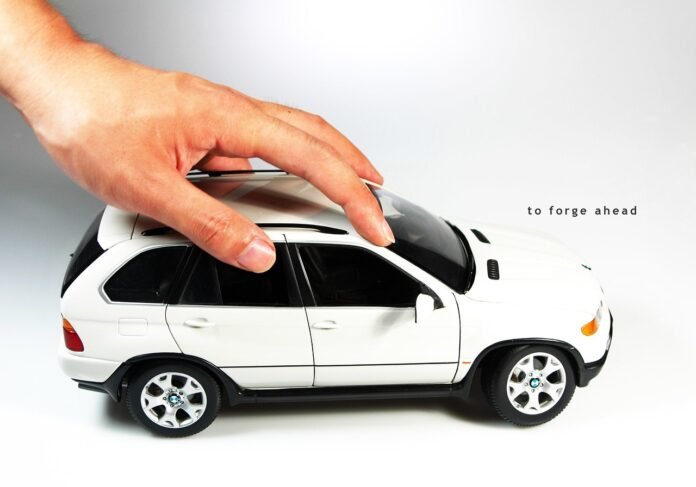Introduction
Selling a car in Texas is straightforward when you organize the paperwork, plan your pricing, and lock down safe payment.
A clean title, a signed odometer disclosure, and clear communication set you up for a smooth handoff.
Texas expects buyers to title and register the vehicle within 30 days.
As the seller, you protect yourself by submitting a Vehicle Transfer Notification (VTN) right after delivery of the car.
Since July 1, 2025, dealers must issue metal plates at sale—but private, person-to-person transactions follow the long-standing routine.
You remove your plates and sticker, the buyer gets their own plates at the county office.
Pricing is part art, part math.
Use market comps and Texas’s Standard Presumptive Value (SPV) rule to avoid surprises when the buyer pays tax at the county office.
Inspections changed in 2025, too.
Non-commercial vehicles no longer need a safety inspection to register, but emissions tests still apply in certain counties—good to know if your buyer asks.
Keep the sale safe by meeting at your bank, confirming funds before handing over keys, and documenting the odometer and condition.
Wrap everything the same day, and file your VTN—your “release of liability”—without delay.
1) What paperwork do I need to sell a car in Texas?
Start with the Texas title in your name.
If a lender is listed, you’ll need a proper lien release before you can transfer ownership.
Complete the assignment on the back of the title and disclose the mileage.
Texas requires odometer disclosure for most vehicles; the state’s title form includes this section.
Bring a photo ID and create a simple bill of sale with price, date, VIN, and both parties’ details.
It’s not a title document, but it’s valuable for your records and for resolving any disputes.
Finally, plan to submit the Vehicle Transfer Notification within 30 days after delivery.
This tells the state you no longer own the vehicle and helps shield you from future tickets or tolls tied to that VIN.
2) How to transfer a car title in Texas for a private sale?
The seller signs the title to the buyer with the sale date and mileage.
Both parties should print names legibly; mistakes can delay or void the transfer.
The buyer then goes to the county tax office within 30 days to apply for a new title and registration.
You can go with them to ensure the application is filed, which prevents headaches later.
If there’s a lien, get a signed, dated lien release on the title, on the appropriate form, or on lienholder letterhead.
Original signatures are typically required; copies aren’t accepted.
Remember to file your Vehicle Transfer Notification the moment the car changes hands.
This is your key seller protection while the buyer completes titling.
3) Do I keep or remove license plates when selling a car in Texas?
For private sales, remove your plates and your registration sticker when you deliver the vehicle.
You may transfer the plates to another vehicle you own if they’re an appropriate type for that vehicle.
If you decide not to keep the plates, deface them before disposal to prevent fraudulent use.
Don’t leave plates on the car—doing so can expose you to tolls or tickets.
Because the buyer won’t have your plates, they can obtain a temporary permit to legally drive to the tax office for titling and registration.
That keeps the process clean and compliant.
4) Do I need a bill of sale to sell a car in Texas?
Texas records ownership through the title, not the bill of sale.
But a bill of sale is still smart—it captures the price, date, “as-is” status, and buyer/seller details for your files.
Include the VIN, odometer reading, and payment method.
Give each party a signed copy and keep digital photos of the documents and the buyer’s ID (with permission) in case a question arises later.
If either party later disputes the price, the bill of sale supports the reported consideration.
That can matter because Texas tax can be based on price or SPV, whichever is higher.
5) How do I file a Vehicle Transfer Notification (VTR-346) in Texas?
File online or by form VTR-346 within 30 days of the sale.
You’ll need the buyer’s full name, address, and contact number, plus vehicle details.
The VTN does not transfer ownership by itself.
It marks the record to show you reported the sale while the buyer titles the vehicle at the county office.
Even if 30 days pass, you can still submit the notice, though the protection isn’t guaranteed.
Submit promptly to reduce the risk of liability for tolls or citations.
6) How do I sell a car with a lien in Texas?
First, contact your lender for your payoff and their release process.
Many lienholders provide an original signed release when paid; if not, request their approved form and steps.
The cleanest private sale is to meet at the buyer’s bank or your lender’s branch.
The buyer pays the lender directly, the lien is satisfied, and you deliver the car and a properly assigned title once the release is issued.
If your title is electronic, some lienholders transmit the release to the state and a paper title is mailed out.
Build in time; lienholders often have processing windows before a clear title is produced.
Never hand over keys until funds are verified and the lien path is locked in writing.
Then file your VTN immediately after delivery.
7) Who pays car sales tax in a Texas private sale?
The buyer pays motor-vehicle sales tax—generally 6.25%—when titling at the county office.
For private-party used purchases, tax may be based on the higher of the price or the SPV.
As the seller, you don’t collect or remit that tax in a private sale.
Your job is to provide accurate price documentation and sign the title properly.
If the reported price is very low, the county may use SPV to calculate tax.
A certified appraisal can help when the price is below a certain percentage of SPV due to condition.
8) How do Texas odometer disclosure rules work for a sale?
Mileage disclosure is a legal requirement for most transfers.
The title assignment includes an odometer section; complete it carefully and accurately.
If the odometer is broken or replaced, note the appropriate status (for example, “Not Actual” or “Exceeds Mechanical Limits”).
Never guess—document what you know to avoid future fraud claims.
Write the mileage and date in ink and ensure names match IDs and the title.
Keep photos of the odometer and signed documents with your bill of sale for your records.
9) Where should I list a used car for sale in Texas to get top value?
Use a multi-channel approach.
List on one or two major marketplaces, plus a local community board to reach nearby buyers.
Write an honest, scannable ad: year, make, model, trim, VIN, mileage, major options, service history, and recent maintenance.
Upload 20–30 clear, well-lit photos, including cold-start and tire-tread shots.
Screen buyers with a quick call or message before meeting.
Meet in daylight at your bank, ride along on test drives, and never allow unaccompanied drives—ask to see a valid driver’s license and proof of insurance.
10) How do I price my used car in Texas using SPV and market comps?
Start with market comps from multiple sites to see real asking prices.
Adjust for trim, miles, condition, options, and local demand to set your “list” and your “walk-away” number.
Then check Texas’s SPV, because buyers’ tax may be based on the higher of SPV or price.
If you price far below SPV, a buyer may still be taxed on SPV—so be ready to explain the discount or suggest a certified appraisal.
Leave room to negotiate, but protect your time by stating “price firm” if you’re already at fair market value.
Once you accept an offer, close at your bank, finish the title, remove plates and sticker, deliver the car, and file your VTN the same day.

